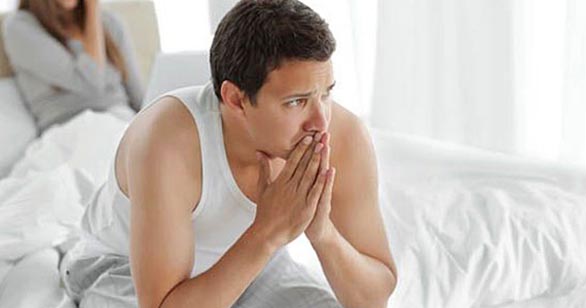Male Anorgasmia is a disorder in men that occurs when there is an ongoing inability to reach orgasm during sexual intercourse. Orgasms are different from ejaculation. Ejaculation is the moment when semen emerges from the penis. An orgasm is a sensation of extreme pleasure that is experienced.
Some men with this disorder have never reached orgasm (primary anorgasmia) while some men have reached orgasm in the past. This is frustrating and at this point there is no solution known for primary anorgasmia. Other men have ceased achieving orgasm during intercourse (secondary anorgasmia). These patients have had orgasms in the past and usually reach the point of erection and can have intercourse, but will not ejaculate or orgasm.
They often times still ejaculate during “wet dreams”, oral stimulation or manual stimulation. Because the definitions vary widely on orgasms (many patients equate ejaculation with orgasm), it is difficult to pinpoint the number of patients. It is estimated that there are between one and ten million cases. That is approximately 8% of men. This disorder has not been studied nearly as much as other sexual disorders, so it isn’t the sort of thing that can be fixed with a little blue pill.
Causes of Male Anorgasmia
Causes will vary by patient. Many times it is rooted in psychological issues or performance anxiety. These psychological issues can vary from stress to sexual abuse to negative ideas and attitudes towards sex. Many married men suffer from anorgasmia due to boredom in the bedroom. Some patients feel stress and pressure due to religious beliefs.

Medicine and surgery may also lead to anorgasmia. Many chronic illnesses such as diabetes may cause anorgasmia. Spinal cord injuries and multiple sclerosis have also been linked to this disorder. Taking anti-depressants has long been linked to male anorgasmia, particularly if the patient is taking an SSRI medication. Fifty percent of patients on SSRI medications are thought to suffer from anorgasmia. Antihistamines, alcohol abuse and drug abuse have also been associated with male anorgasmia.
As men age, their testosterone levels will change causing their sex drives to slow down. They also have slower reflexes and guess what an orgasm is? You guessed it – it’s a reflex. So older men therefore have a more difficult time reaching orgasm.
Prostate surgery will often times interfere with orgasms. The amount of semen dramatically declines when the prostate is removed. In some cases, the semen travels backward into the body toward the bladder. This is defined as retrograde ejaculation. Radiation from cancer treatment may affect the nerves in the penis, also leading to difficulty reaching orgasm.
Treatments of Anorgasmia
In order to determine if you have anorgasmia you must first see your doctor. They can help determine the root of the issue and suggest the best way to treat the disorder. The FDA has no approved medications specifically for male anorgasmia.
If it’s psychological you may consider sex therapy treatment. Sex therapy is focused on finding a solution, and lasts anywhere from a few sessions to a dozen sessions. You will be asked many questions and your therapist will give you suggestions, homework and exercises to try between sessions. The therapist will help find any relationship issues and help find couples ways to make sexual intercourse a fun, relaxed and playful activity once again. Maybe the use of a massager will be the key to fun and orgasm at the same time.
In some cases regular therapy will be needed. Many times a patient’s upbringing has them believing that sex is dirty or to be used for procreation only. Instances of rape and sexual abuse will also lead to therapy in order for the patient to work out the deep seeded issues left by such horrible life experiences.
Pharmacotherapy
Pharmacotherapy may also be used in the treatment of anorgasmia. If the cause is related to anti-depressants, than it may be as simple as switching to a non-SSRI medication. Bupropion based medicines generally have less sexual related side effects. Many patients will probably have their testosterone levels checked, and if the levels are low then testosterone replacement therapy may be implemented. There is also a nasal oxytocin that has been helpful in many cases. While it may not be the most sexy way to treat anorgasmia, it may be the key to the patient fully enjoying sexual intercourse again!
Cognitive Behavioral Approach
The cognitive-behavioral approach is commonly used today in solving male orgasmic disorder in men. It starts with paying attention to the relationship and attitudes of the couple towards one another. Therapists try to build open communication related to sexual matters, making the woman to learn about how to stimulate the penis of her man, receiving directions from him on how to maximize pleasure. Stimulation of orgasm may take several sessions, and as soon as that is done, the couple can move progressively to intercourse, first through penetration when he indicates that he is close to climax, and then earlier in the sexual arousal process until the man can function normally.
What is difficult for male anorgasmia patients is the frustration that arises from the inability to orgasm during intercourse. It may lead to feelings of letting one’s partner down. Since it is much easier to address issues of erectile dysfunction instead of male anorgasmia, men must be patient when working with their medical professional towards a cure.






